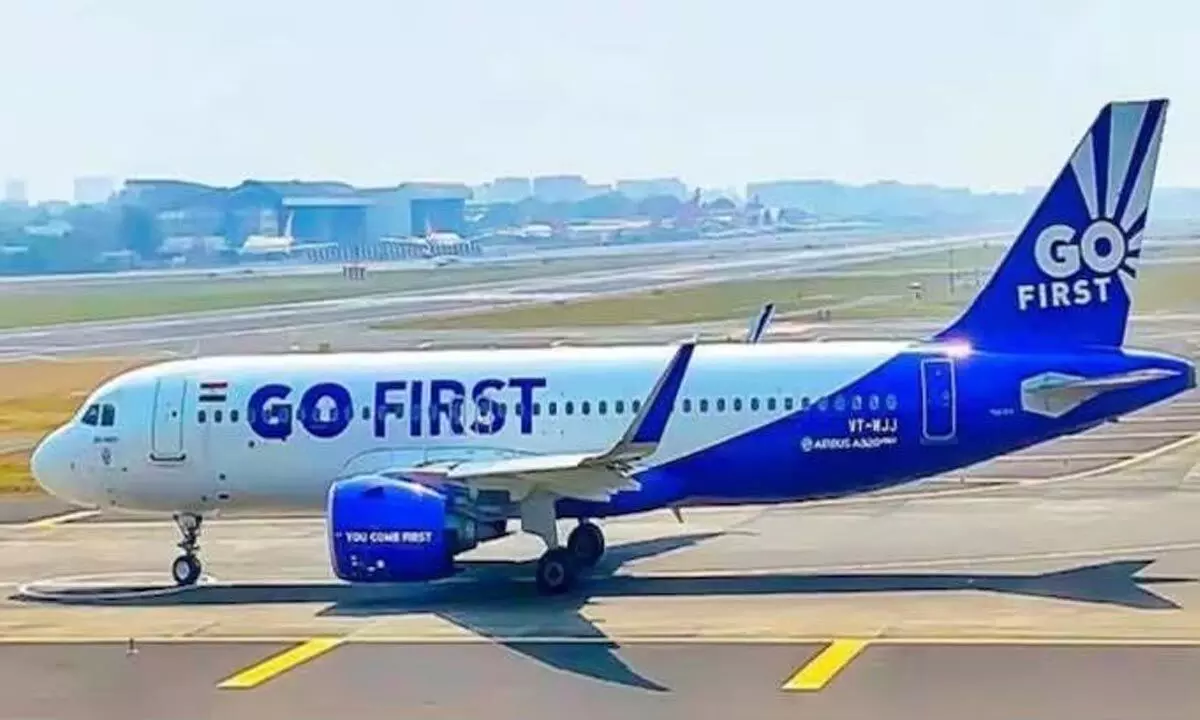GoFirst joins list of failed airlines

GoFirst joins list of failed airlines
The airlines industry seems to be jinxed in many ways. The number of thriving ventures that have ultimately failed is probably more than any other sector of the economy.
The airlines industry seems to be jinxed in many ways. The number of thriving ventures that have ultimately failed is probably more than any other sector of the economy.
The latest news that the Wadia-promoted GoFirst has filed for insolvency with the National Company Law Tribunal (NCLT) indicates it may be joining a long list of failed airline companies that took to the skies in the 1990s after the launch of economic reforms.
In this case, the airline has run into trouble at a time when the entire aviation sector is seeing resurgence in demand and growth. After the complete collapse of the travel industry during the pandemic in 2020 and 2021, the situation improved rapidly over the past year. The outlook for the industry is brighter than ever right now with passenger traffic expanding vastly in recent months.
It is thus in the midst of the busiest travel season since 2020 that GoFirst has had to cancel flights affecting thousands of passengers. It commands a relatively small share of the market – about seven per cent - but the sudden suspension of operations will create serious hardships for travellers. The magnitude of the issue can be gauged from the fact that the airline is reported to have carried 30,000 passengers daily in March. Stranded passengers are complaining that they have to pay three or four times the original amount for fresh tickets. As for refunds, it looks like a long haul.
The immediate cause for the crisis, according to the airline, is the need to ground nearly 50 per cent of its fleet owing to failing engines supplied by Pratt and Whitney. The engine issues in the Airbus A320neo aircraft have equally affected Indigo, which also had to ground several aircraft. By all accounts, the issue has been managed better by the latter airline largely by opting for two suppliers as well as the fact that it has a much larger fleet. As for GoFirst, it has already been in precarious financial territory for some time with its financial liabilities listed at Rs. 14,172 crore in the Initial Public Offering prospectus filed in 2020. It did not, however, move ahead with the IPO largely due to the onset of the pandemic.
The airline has expressed confidence that it will be back in the skies shortly insisting that the filing in NCLT is meant for revival rather than closure. But the outlook is bleak judging by the fortunes of airlines that have suspended operations in the past. The list of such entities is long enough to cause concern over the viability of airlines in the country. The first private carrier to take off was East West Airlines in 1992 after liberalisation. Despite its popularity, it had to close down due to financial difficulties in 1996.
Another airline launched around the same time was Damania Airways. The superior inflight service of the airline was a big draw for air passengers plus the fact that it was the first serve to alcohol on domestic flights. The airline ran into turbulence owing to the government’s insistence on private carriers serving smaller cities. It was sold in 1995 to Skyline, which shut shop after two years.
Modiluft also took off in the post-liberalisation era in 1993. It had a technical tie-up with Lufthansa but this collaboration soured after a few years and the airline had to cease operations. As for Air Deccan, the saga is well known as it became the first budget airline, the brainchild of Capt. G.R. Gopinath.
Other airlines which bit the dust included Sahara, which was ultimately taken over by Jet Airways, and the public sector Vayudoot set up to serve remote parts of the country.
Probably the most publicised airline failures, however, have been Kingfisher Airlines and Jet Airways. The former was a premium segment carrier promoted by Vijay Mallya but did not last long. On the other hand, Jet Airways had one of the longest stints as a private airline from 1996 to 2019 and its closure came as a shock.
Even this compilation of airlines that rose and fell after liberalisation, does not include many other smaller enterprises that fell by the wayside. The airlines industry is thus notoriously tough to navigate and stay the course. The current market leader, Indigo has, however, managed to weather the turbulence of the pandemic and yet retained its viability. A revamped Air India under Tatas management is also likely to have the power to sustain.
Some of the major issues preventing carriers from remaining profitable are the high cost of fuel and shifts in passenger traffic volumes due to unexpected events like the pandemic. Major equipment problems such as the one being faced by GoFirst are, however, unusual especially as many airlines are opting to lease aircraft rather than outright purchase. In any case, there is no doubt that the withdrawal of even a single airline from the skies at this stage will cause considerable hardship to passengers.
It is for the Directorate General of Civil Aviation (DGCA) to step in to ensure airlines redress their grievances. Refunds should be a priority while alternative flights need to be arranged that are not exorbitantly priced. Interests
of the consumers must be paramount for both airlines and DGCA.







